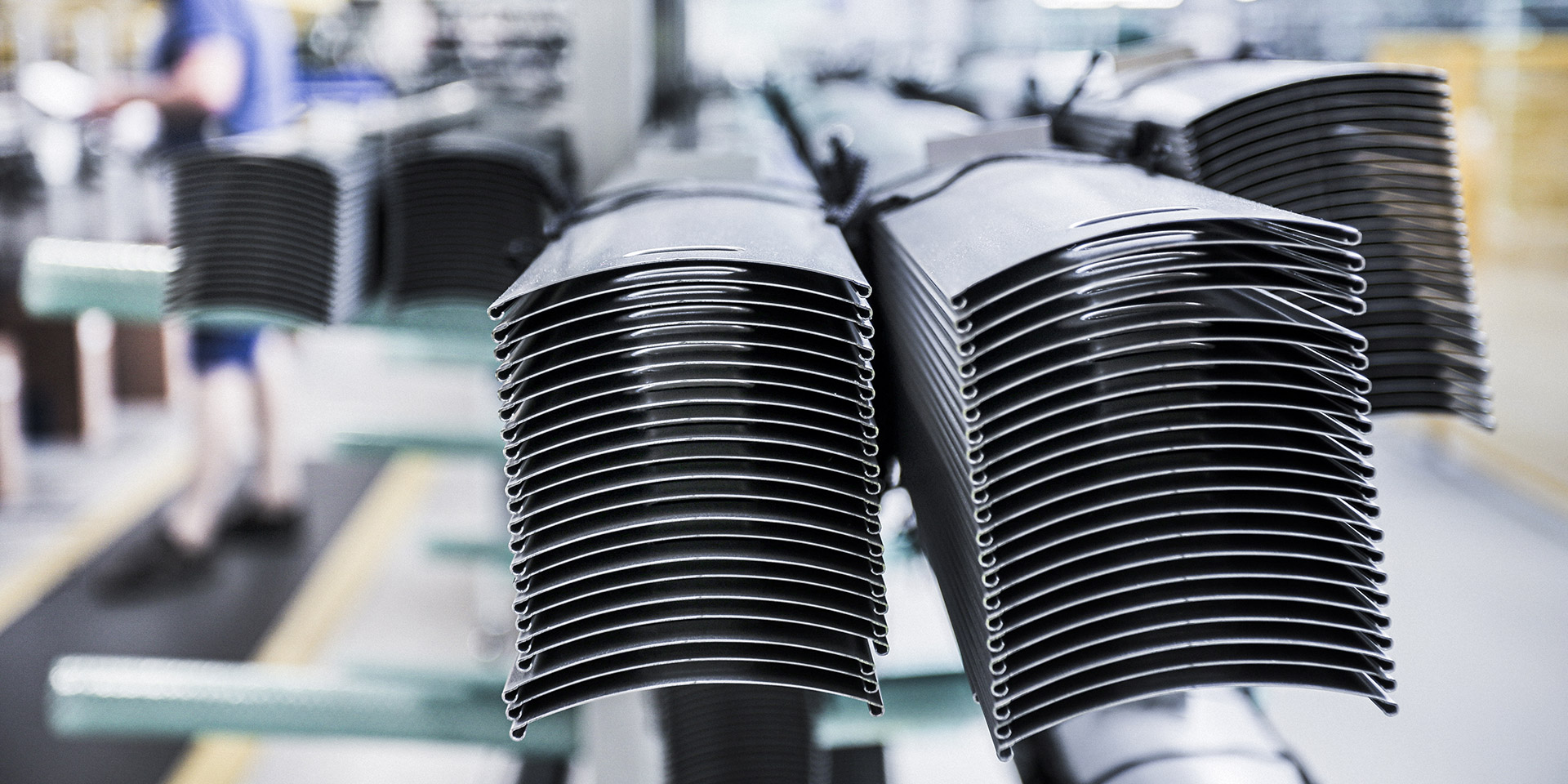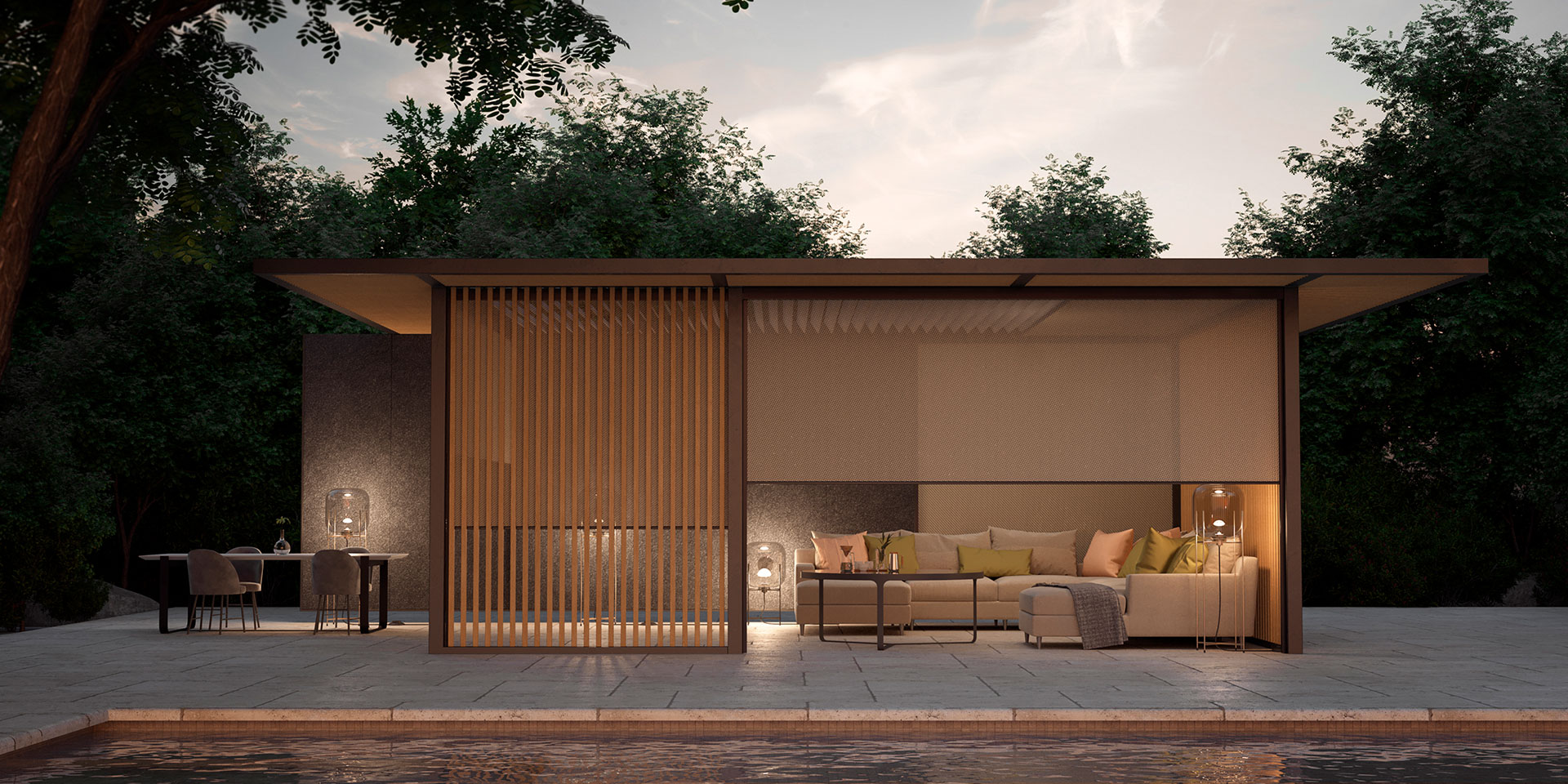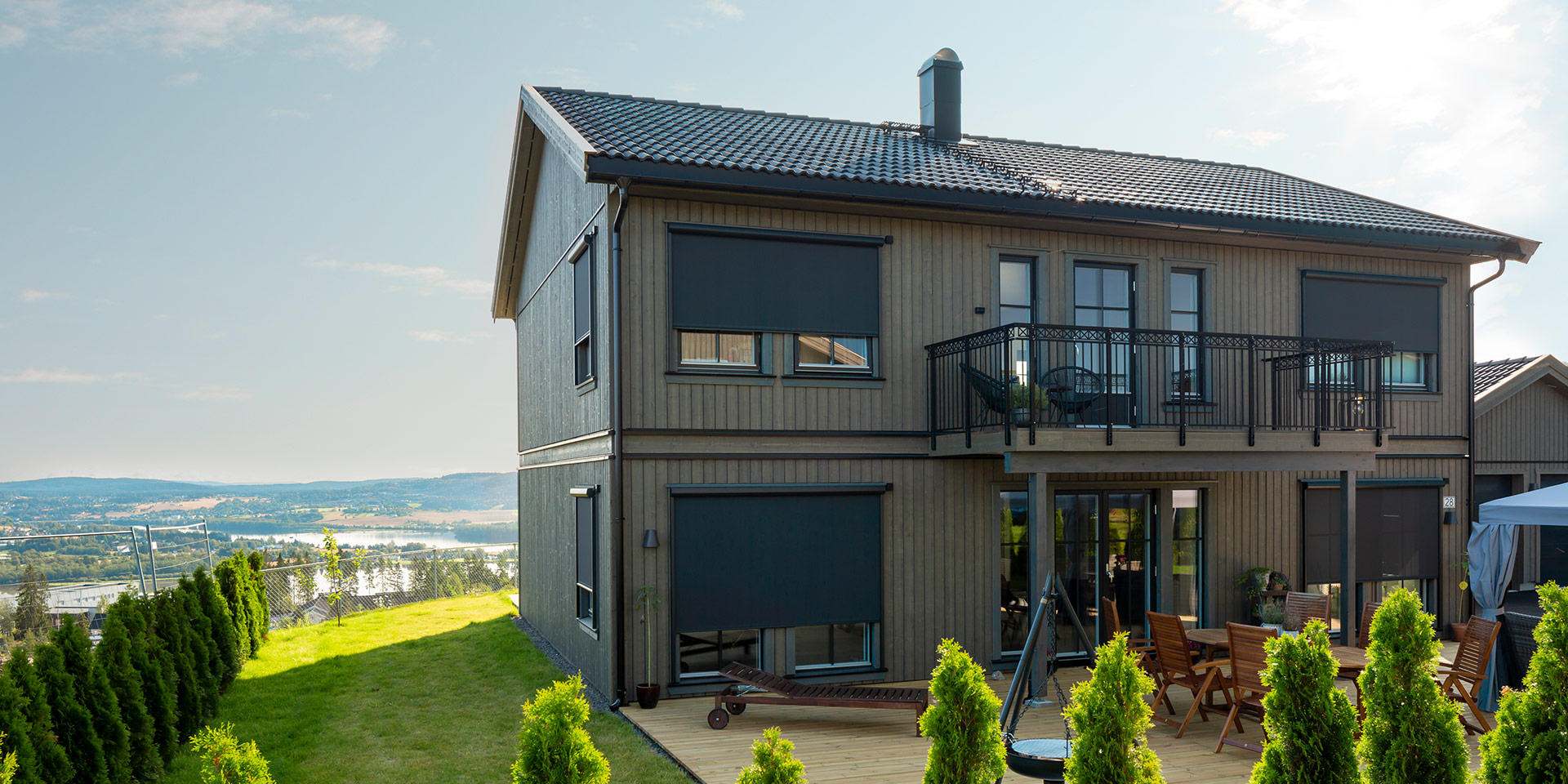External blinds: how noisy are they and how well do they insulate sound?
You can frequently read on the Internet that external blinds are noisy. According to other sources, they are great at insulating sound. We would like to set the record straight regarding both of these claims. Their noisiness depends on the type of blind and motor, while the insulation quality depends on what kind of windows you have.
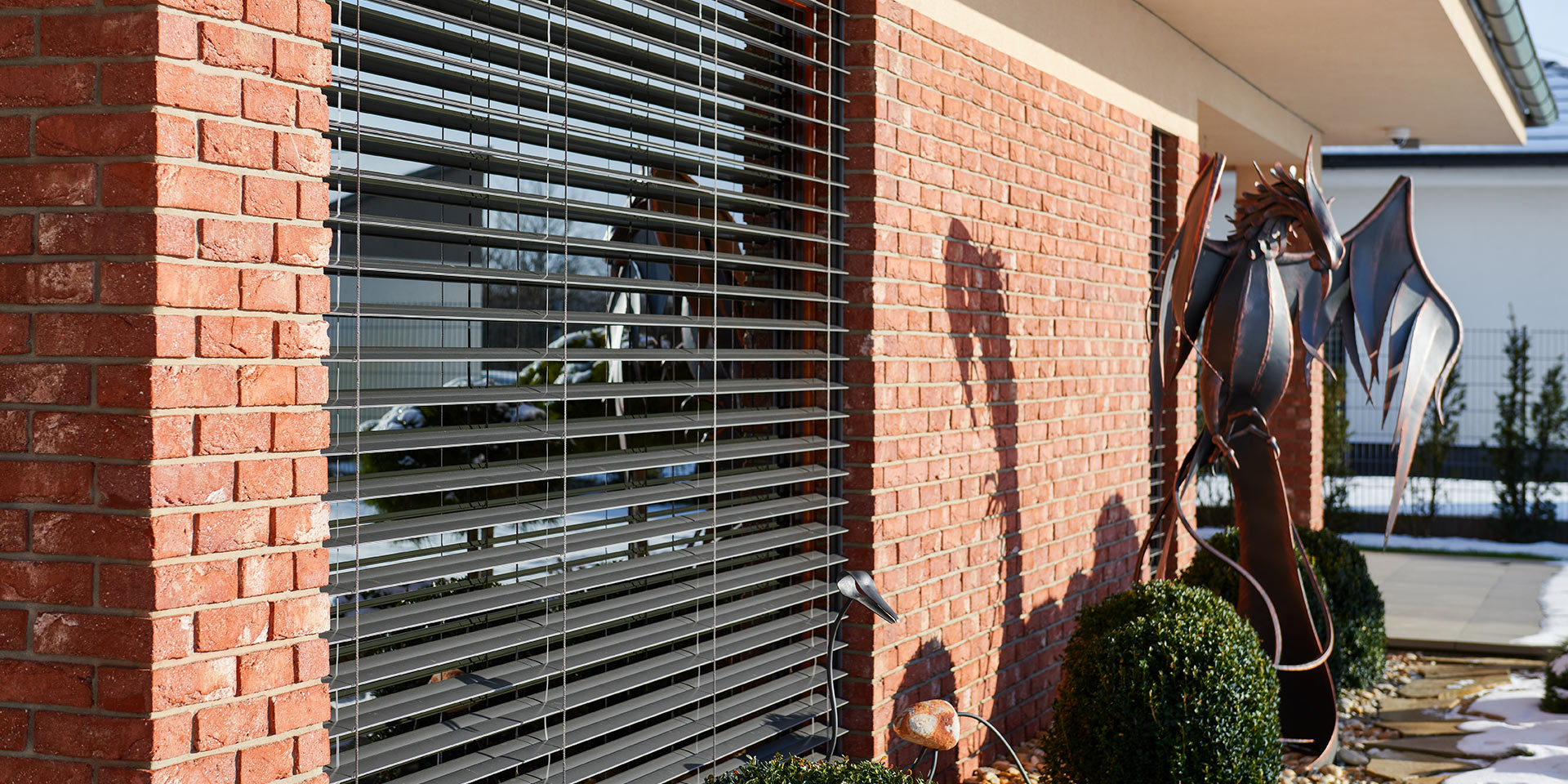
External blinds are only noisy in the wind or when moving.
External blinds make a noise when brought up, dropped down or having their slats tilted as the slats or guiding pins make contact. However, this will likely not bother you that much since the blinds are only dropped or tilted a couple of times a day. You can also mitigate this problem using motors with silent brakes. While standard motors tilt slats in steps, resulting in clanking noises, motors with silent brakes are capable of smoother movement and therefore very silent tilting.
The most silent motors include Elero Comfort, with their absolutely quietest variant being the two-speed Elero Comfort silent brake motors.
External blinds can also be heard when a strong wind is blowing outside. That is why you should pull your external blinds up in case of wind, storm or hailstorm in order to prevent both noise and risk of damage.
The quietest blinds are those using guide rails.
Slat types and guiding methods also influence the noisiness of blinds.
External blinds with guiding rails are always quieter than cord-guided ones. Being firmly anchored along their entire length, there is not as much play and therefore not much movement.
Z and S are the quietest of the slats; additionally, our external blinds have their slats covered with rubber sealing so that they do not clank against the metal. Noisiness is reduced using an elliptical guiding pin, which fills almost the entire space within the guiding rail, reducing the play even further.
Moreover, our type Z and S external blinds have lockable slats. When set to full darkness, they lock into each other and act like a continuous surface, which is almost identical to roller shutters.
If you are still looking for an absolutely silent way of sun screening, we can recommend, for example, external textile screens. These consist of one piece of textile instead of aluminium slats, which makes them very quiet in strong winds.
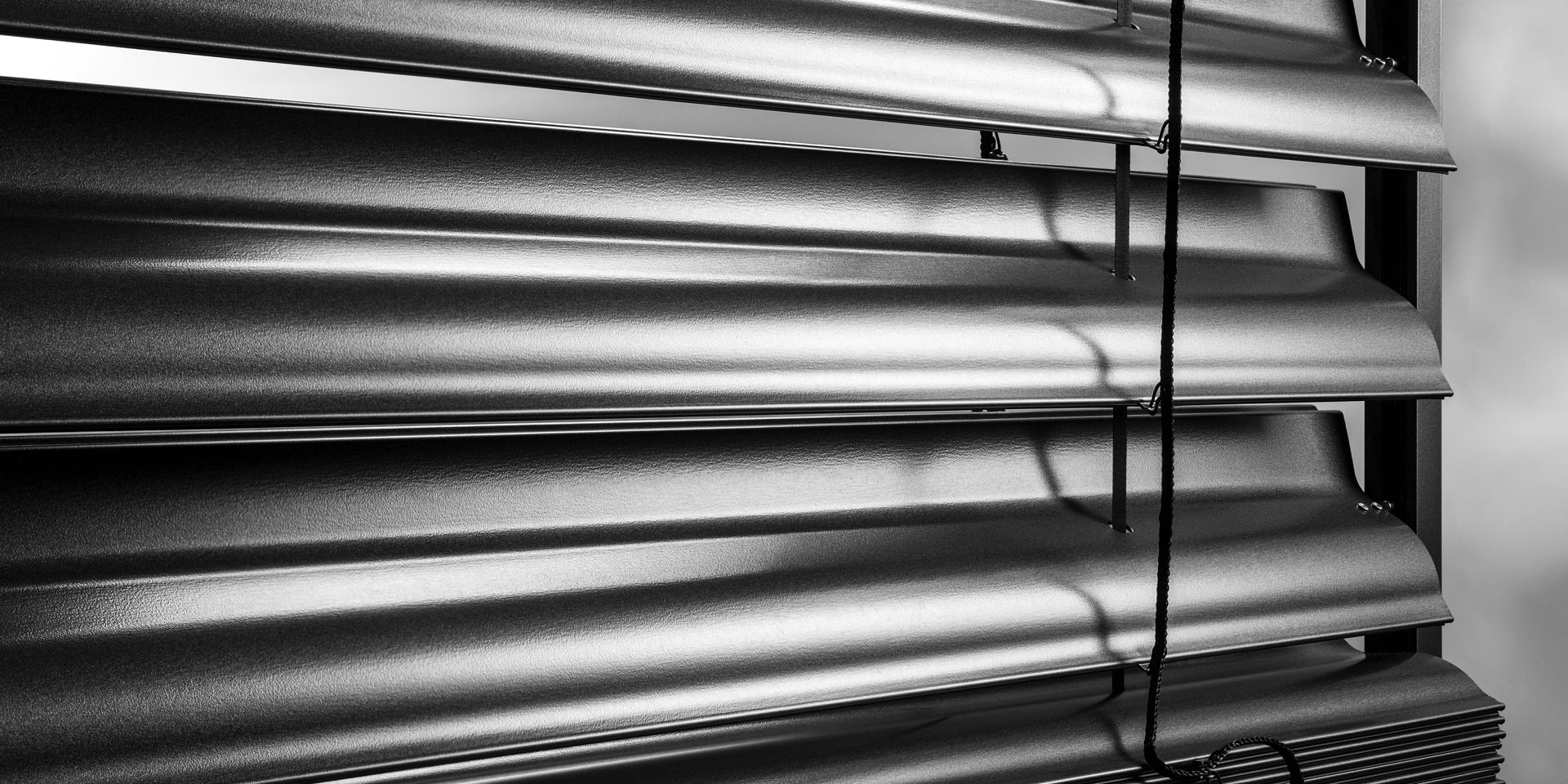
Other noise sources: defective motors, clogged bearings
The noisiness of external blinds can also be caused by motors. It might be a factory defect or clogged bearings. However, manufacturing defects tend to be rare as the defect is usually identified during assembly.
Clogged bearings are a more complicated issue. Over time, dust and other impurities find their way into the bearings, which results in unpleasant squeaking noises.
Assemblies with uncovered parts are the worst in this respect as the motor is not protected by a case or sheet, only the upper profile. While being the cheapest assembly option, it is not very aesthetic and therefore not recommended by us. NEVA partners install blinds into a sub-plaster case, a façade box or underneath a cover sheet, where the motor is at least partially protected.
However, even covered motors will get dirty over the years. If the motor starts making sharp squeaking noises, contact the servicing department of your assembly company.
Unprofessional installation
Noise from external blinds can also be caused by unprofessional installation. When installing external blinds, it is necessary to make sure the guiding rails do not converge, diverge or are off axis. Millimetres matter during this process.
If the guiding profiles are ever so slightly misaligned, the guiding pins get stuck and make nasty noises, not to mention the fact that blind wear out faster. This is one of the reasons we recommend that you entrust the assembly to a specialized company.
Can external blinds also double as acoustic insulation?
It is often suggested that, in addition to light screening, external blinds can also provide acoustic insulation. Despite not being primarily designed as acoustic insulation, they can work as an external barrier which absorbs some sound.
We have prepared an example, where a car is outside the window and the driver is revving up the engine. The blinds are indeed capable of partially absorbing the sound.
The comparison of outside noise with external blinds dropped down and without.
Despite the apparent differences, most of the acoustic insulation is still ensured by the windows and the walls/façade. External blinds should therefore be perceived as an addition that can help with insulation but isn’t really intended for that purpose.
To learn more about external blinds and their insulation capabilities, contact one of our partner assembly companies, who will be happy to discuss this topic with you.

